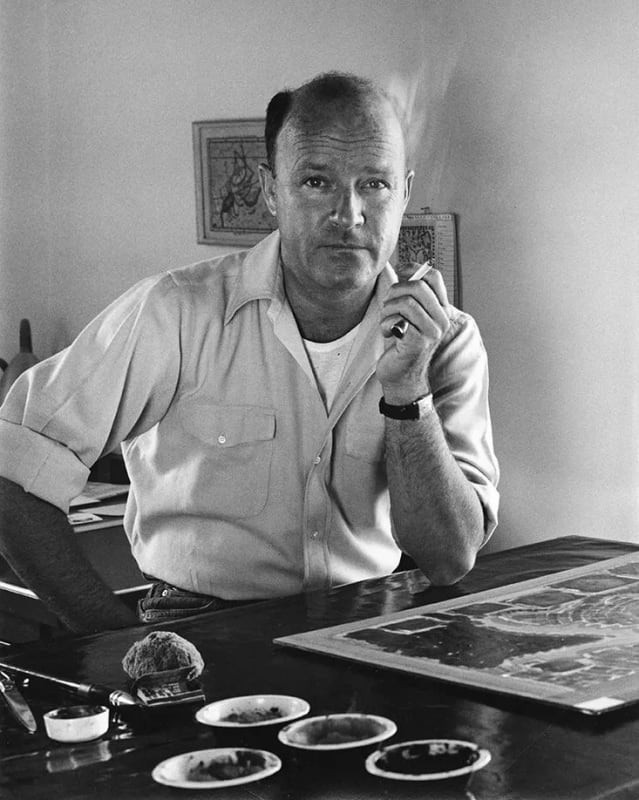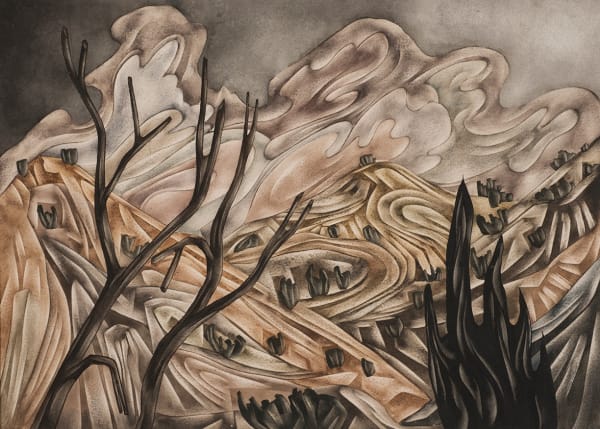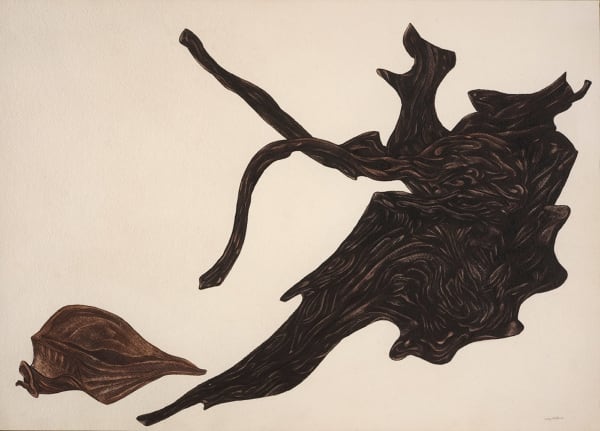Cady Wells US, 1904-1954
“I am 28 years old and have spent most of my life so far trying to justify my existence to my family — and not to myself — which wasn’t smart. But this summer for the first time I forgot that completely and found myself doing something I loved and I know that everything is going to be alright because I can paint because I can’t help it.”
- Cady Wells to Alfred Stieglitz after coming to New Mexico in 1932
Cady Wells was born in 1904 in Southbridge, Massachusetts. He was afforded all the cultural and educational advantages that a child of a wealthy first-generation New England family could receive. As a young man he had years of classical training in music, literature and the arts. He also spent time in boarding school in Arizona, and this exposure ultimately formed his love of the desert landscape and the basis of his aesthetic and spiritual vision.
In 1931 Wells settled in New Mexico and soon thereafter sought out Andrew Dasburg as a teacher. Dasburg introduced him to the fluid medium of watercolor, which clearly suited Wells’ style and vision. From 1932-1933, Wells enrolled in courses at the Fogg Art Museum at Harvard. In 1935 he went to Japan specifically to study Japanese brush techniques. Throughout these years, however, Wells lived and worked primarily on his ranch in Jacona, NM. The Pojoaque Valley, including nearby Black Mesa, became the primary subjects of his paintings. Here, he not only depicted the mysterious landscape, but was able to express his emotional power through these naturalistic forms in his very unique artistic voice. Cady could sum up weeks of looking at the surrounding landscape in a few energetic strokes, or a melee of memories in a mass of amoeba-like, curved forms. As his friend Merle Armitage wrote, “Cady was the only painter who ever really got under the skin of the southwest…. Cady really understood its color, its gigantic scale, its infinite and fascinating detail, and its dramatic past…”
In 1933, Wells had his first show alongside Agnes Pelton and Raymond Jonson at the Museum of New Mexico (now the New Mexico Museum of Art) in Santa Fe, which marked the beginning of his career as an artist. Wells went on to achieve recognition as an artist both regionally and nationally. He was given twenty-one solo exhibitions, was included in seventy group shows and was often noted in media and books on the subject of twentieth-century American art. Georgia O’Keeffe wrote in a forward for an exhibition catalog in 1944, “I am glad you are showing Cady’s paintings at the same time that Stieglitz is showing mine because I think we are the two best painters working in our part of the country. I think we both love that country more than most people love any place.” (Durlacher Galleries, New York City, 1944).
Cady’s career was interrupted in 1941 when he entered the army. He did not paint again until his return to New Mexico from the European battleground in 1945. Wells’ last group of works, painted from the latter part of 1952 through 1954 show an increased control of form where colors are applied to simulate the luminosity of stained glass. This final phase of Wells’ development was interrupted before arriving at full fruition by the artist’s death in November 1954. He died of a heart attack at the age of forty-nine.
The sudden death of Cady Wells moved some in the art community to speculate that had Wells lived out his career, he might have ended up as the pre-eminent modernist painter of the region. His body of work uniquely conveyed the synthesis of European modernism and American subject and spirit. Wells held the quality of the region, its great distances and the magic of its physical and spiritual color, in the cadence of his delicate line and brush.
-
 Cady WellsBlue Study, 1947
Cady WellsBlue Study, 1947 -
 Cady WellsPenitente Procession, 1939
Cady WellsPenitente Procession, 1939 -
 Cady WellsStained Glass Window, 1954
Cady WellsStained Glass Window, 1954 -
 Cady WellsJacona Evening, circa 1936
Cady WellsJacona Evening, circa 1936 -
 Cady WellsLandscape #2, Jacona N.M., Fall 1953, 1953
Cady WellsLandscape #2, Jacona N.M., Fall 1953, 1953 -
 Cady WellsNew Mexico Landscape, 1938
Cady WellsNew Mexico Landscape, 1938 -
 Cady WellsOrchard, Jacona, 1953
Cady WellsOrchard, Jacona, 1953 -
 Cady WellsPoplars, Jacona N.M., 1953
Cady WellsPoplars, Jacona N.M., 1953 -
 Cady WellsThe Chasm, 1953
Cady WellsThe Chasm, 1953 -
 Cady WellsWood Piece & Shell, 1936
Cady WellsWood Piece & Shell, 1936










